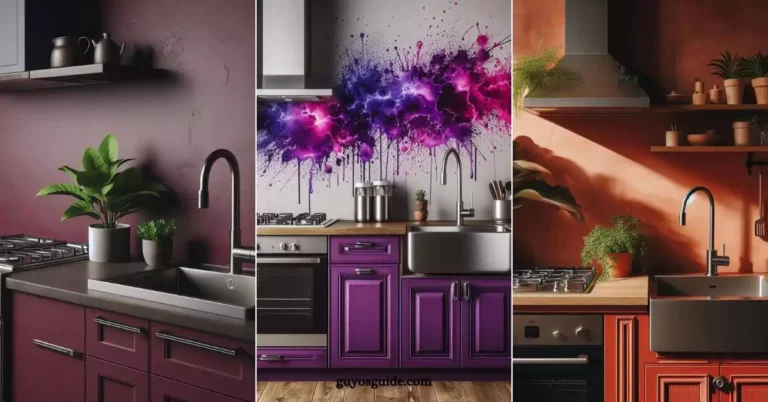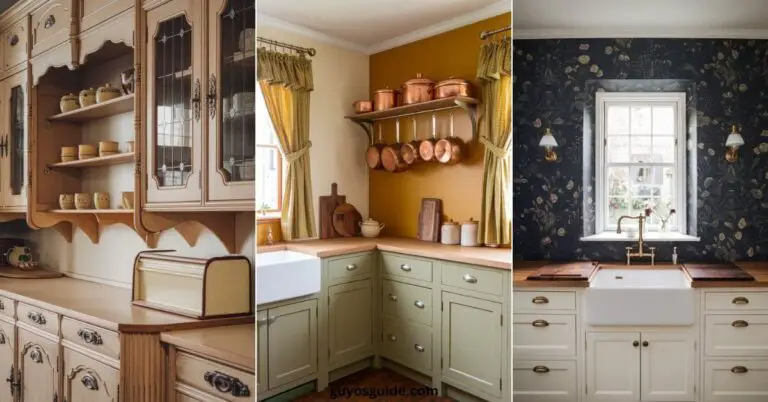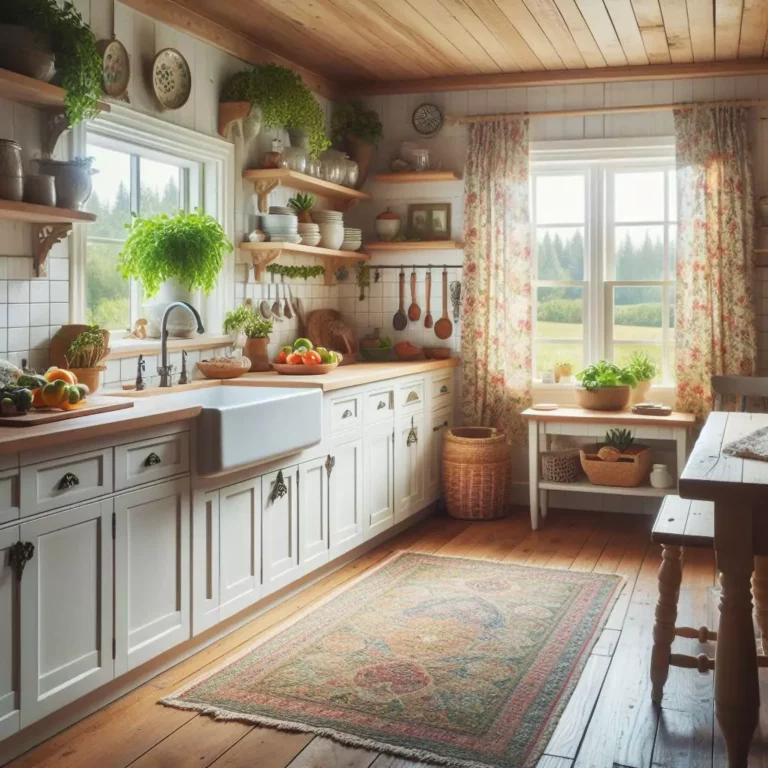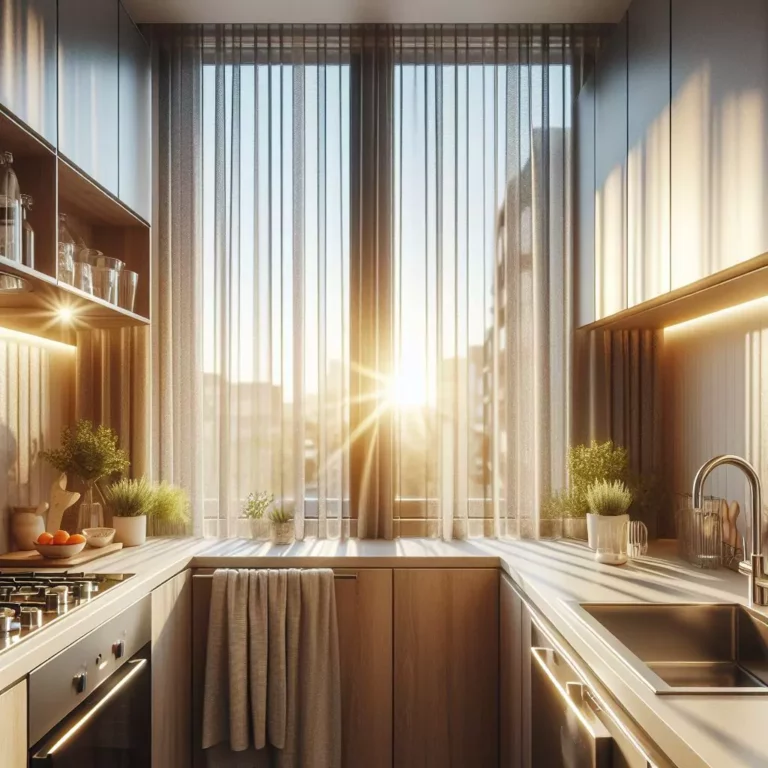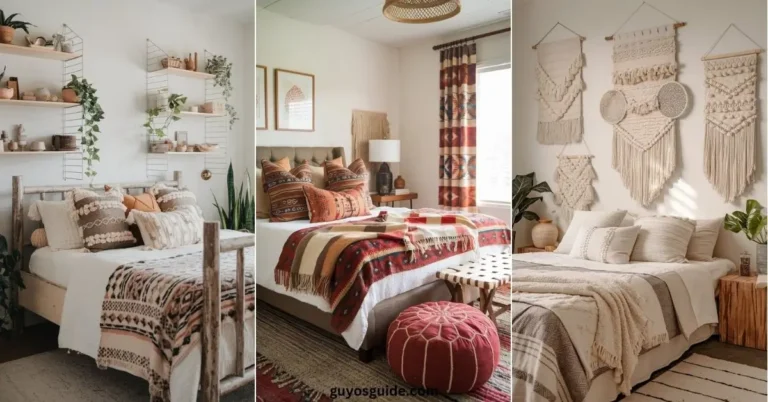23 Transitional Dining Room Ideas to Elevate Your Home Design
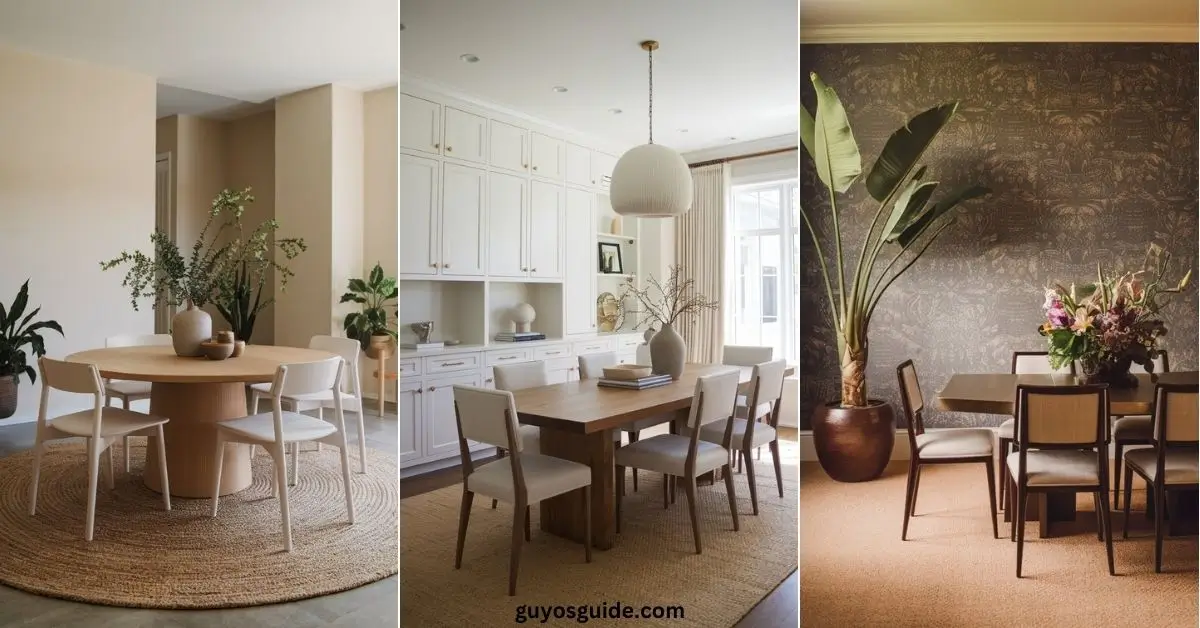
Some of the links in this post are affiliate links, meaning, at no additional cost to you, We will earn a commission if you click through and make a purchase.
Looking to update your dining room?
Transitional style blends classic and modern design for a fresh, timeless look.
In this article, we’ll explore simple and stylish ideas to transform your dining space into something special.
Ready to mix old and new?
Let’s get started!
1. Combine Classic and Contemporary Furniture
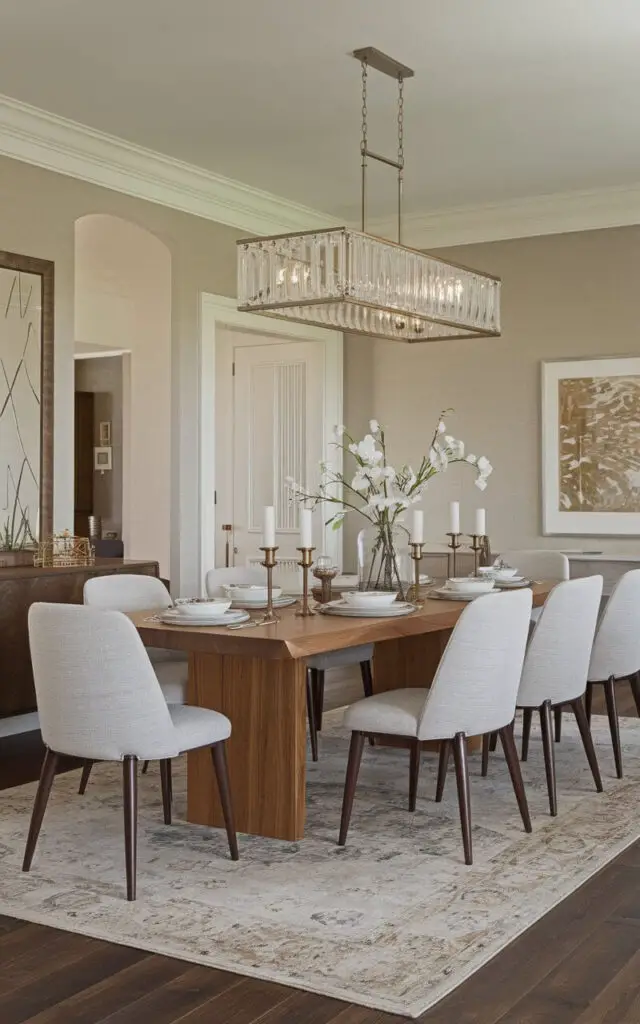
To achieve a transitional look, mix traditional dining tables with modern chairs.
The combination creates a balance between timeless elegance and contemporary style.
Choose a classic wooden dining table and pair it with sleek, upholstered chairs in a neutral fabric.
The contrast will make the space feel fresh without being too trendy.
2. Play With Neutral Tones
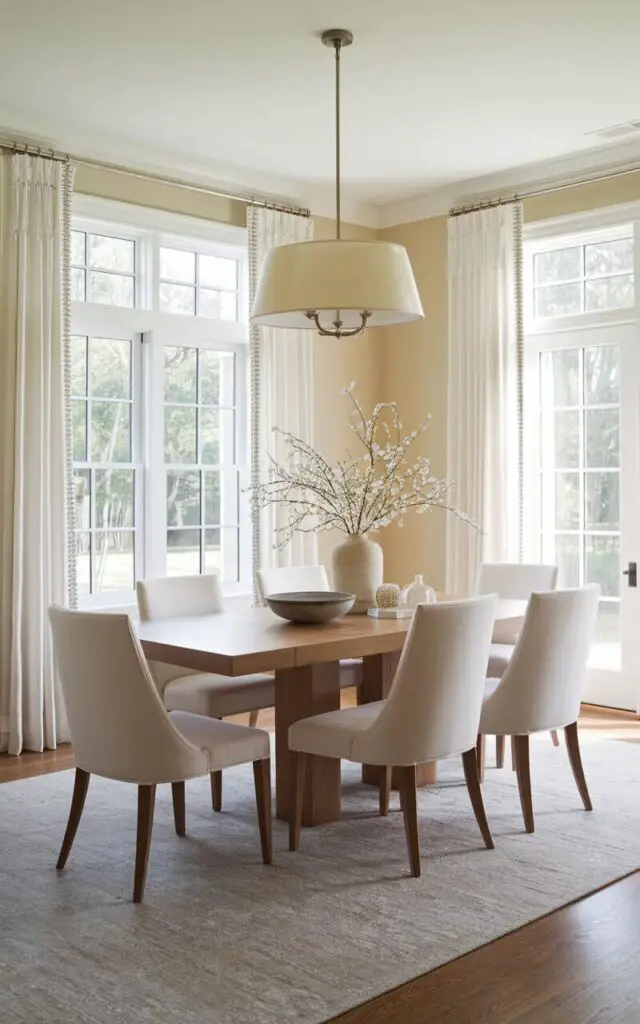
Neutral tones like beige, gray, and white are the foundation of a transitional dining room.
These colors provide a clean and sophisticated backdrop, allowing you to focus on the textures and furniture.
Layer different shades of neutral colors through furniture, rugs, and curtains for a cohesive look that feels warm and inviting.
3. Add Statement Lighting
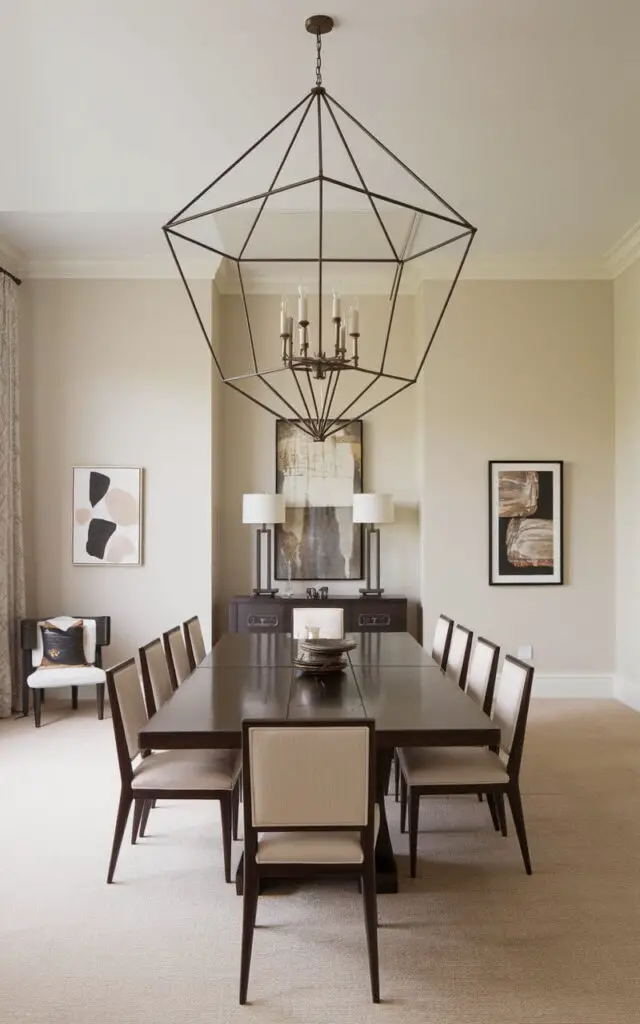
A bold chandelier or pendant light can serve as a focal point in your transitional dining room.
Whether you choose a vintage-inspired crystal chandelier or a modern geometric fixture, lighting is a key element that merges the old with the new.
Keep the rest of the decor understated to let the lighting truly shine.
4. Use Subtle Patterns
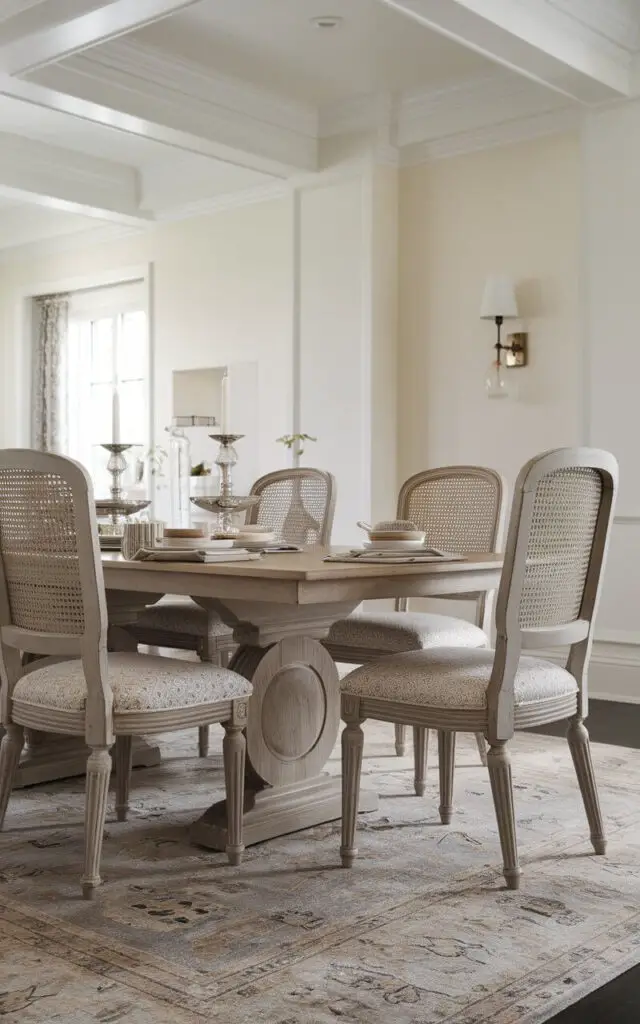
While transitional dining rooms tend to stay neutral, adding subtle patterns in the form of rugs, drapery, or seat cushions can introduce a layer of visual interest.
Choose patterns that complement the room’s palette, like a soft floral or geometric print, to maintain harmony while keeping things interesting.
Find floral patterned rugs on Amazon.
5. Incorporate Mixed Materials

Mixing materials such as wood, metal, glass, and stone is a hallmark of transitional design.
For example, pair a glass dining table with wooden chairs, or use a metal-framed light fixture above a rustic wooden table.
This blend of textures helps create a balance between modern and traditional elements in your dining room.
6. Keep the Lines Clean

Transitional dining rooms often focus on clean lines and sleek silhouettes.
Opt for furniture and decor items with simple shapes and minimal ornamentation.
This will help balance out any traditional elements you have in the room, ensuring that the overall look remains sophisticated and uncluttered.
7. Layer Textures
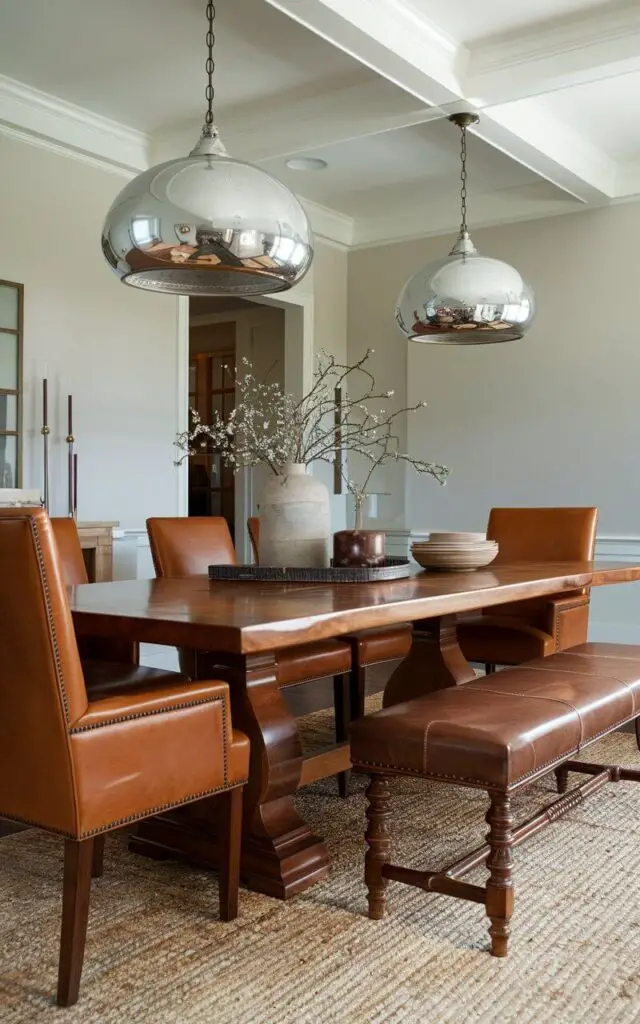
From upholstered chairs to wooden tables and metallic accents, layering different textures is key in a transitional dining room.
It adds depth and warmth, making the room feel more dynamic.
Think velvet, leather, and linen fabrics mixed with smooth wood and polished metal for a refined yet cozy atmosphere.
8. Add a Rug for Warmth
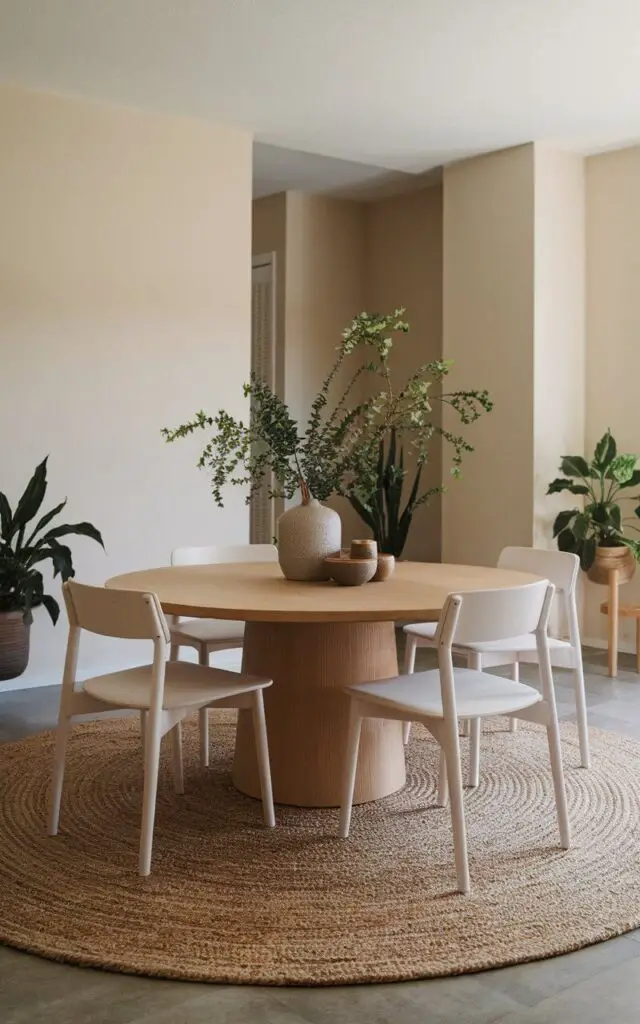
A dining room rug not only grounds the space but also adds a layer of comfort.
Choose a neutral-toned rug with a subtle pattern to complement the transitional style.
Opt for materials like wool or jute that provide both texture and durability, perfect for withstanding the wear and tear of a dining space.
9. Integrate Built-In Storage
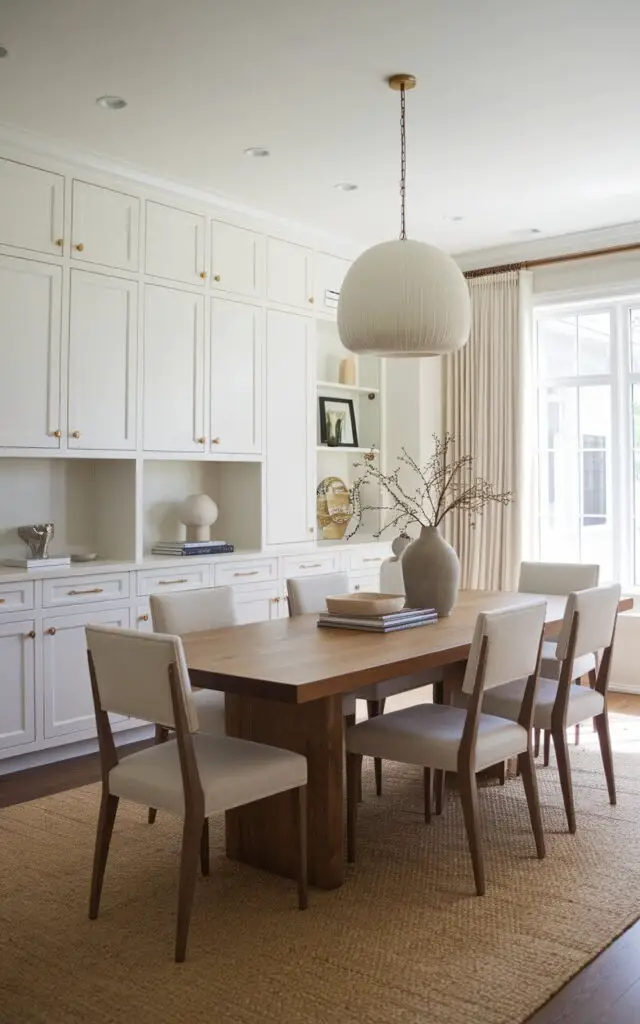
Built-in cabinets or sideboards are both functional and stylish in a transitional dining room.
They provide much-needed storage for dinnerware and linens while blending seamlessly into the room’s design.
Choose cabinetry with simple lines and neutral colors, and use hardware that complements other elements in the room.
10. Bring in Oversized Artwork

A large, statement piece of art can elevate the look of a transitional dining room.
Whether you choose a modern abstract painting or a classic landscape, oversized artwork adds personality to the space.
Ensure the colors and style of the art complement the room’s overall color scheme for a cohesive look.
11. Choose Comfortable Seating
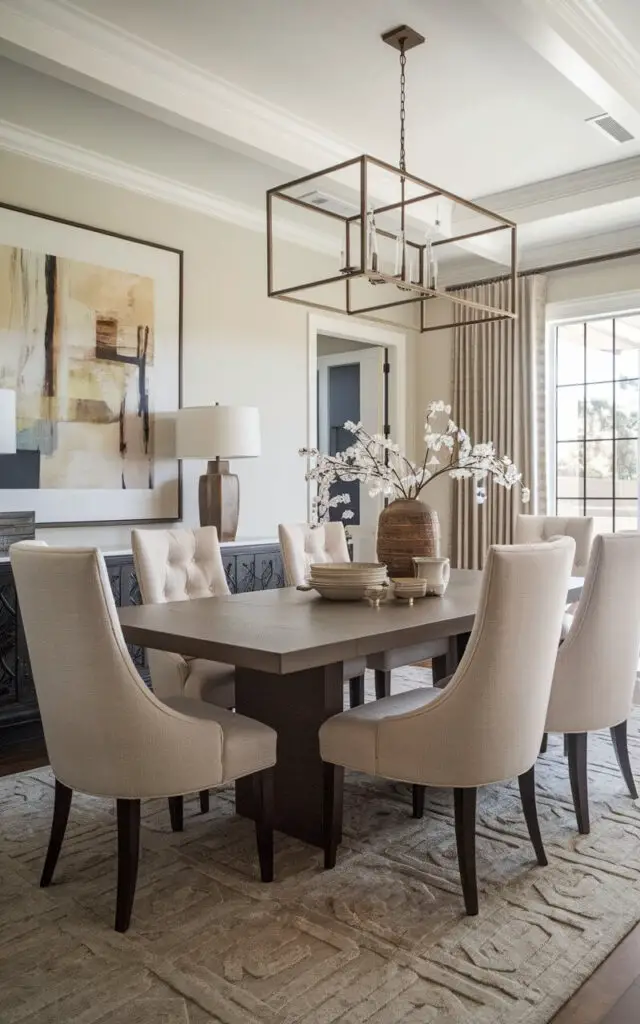
Comfort is key in a transitional dining room, so be sure to choose chairs with cushioned seating and supportive backs.
Upholstered dining chairs in neutral tones like beige, gray, or navy blue can balance both the traditional and modern aspects of your space.
The right seating can transform the dining experience.
12. Add an Accent Wall
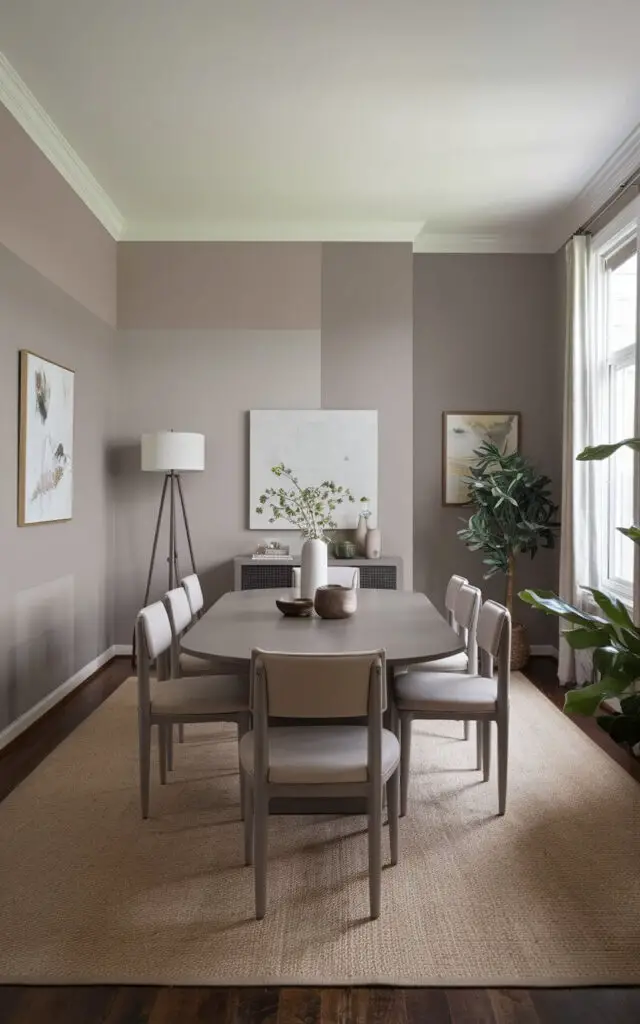
An accent wall can add depth and focus to your dining room without overwhelming the space.
Opt for a neutral but contrasting paint color or consider a subtle textured wallpaper.
The key is to keep the color muted and the pattern simple to maintain the transitional balance between modern and classic.
13. Use Wood in Warm Tones
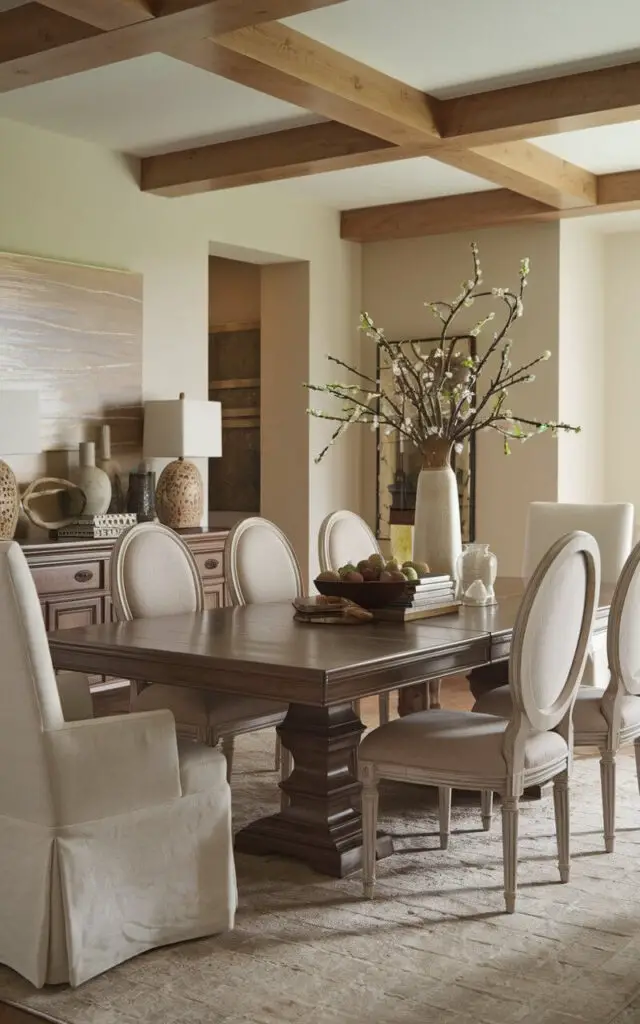
Rich, warm wood tones work well in transitional dining rooms.
Whether through the dining table, chairs, or sideboard, wooden elements in warm oak or walnut tones bring a natural, earthy feel to the room.
The organic material complements both traditional and contemporary elements, helping to unify the design.
14. Opt for Simple Window Treatments
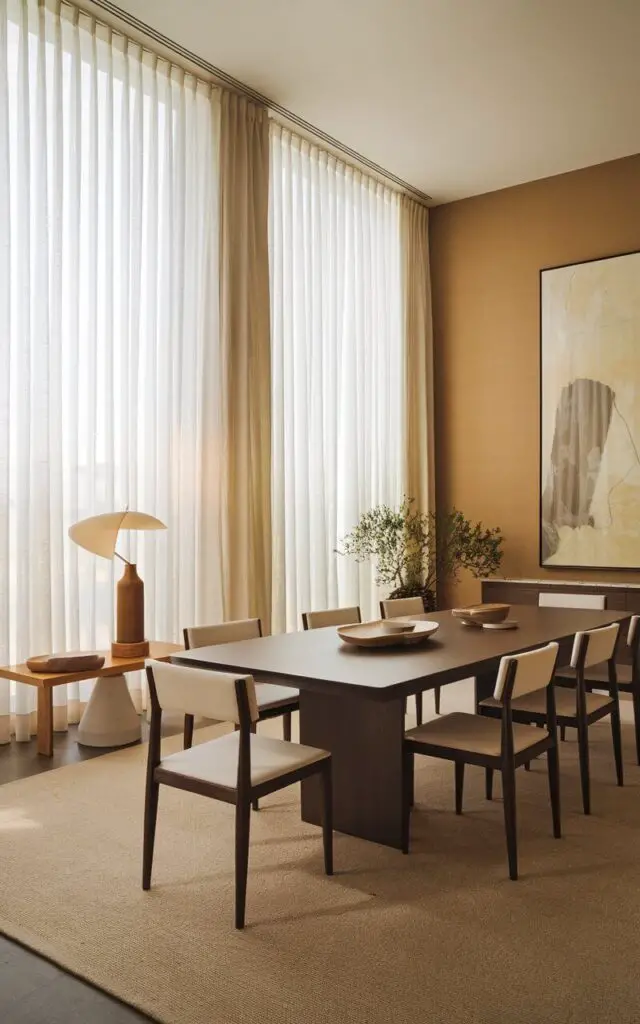
When it comes to window treatments in a transitional dining room, simplicity is key.
Stick to light, airy curtains in neutral shades like ivory or soft gray.
This keeps the focus on the room’s furniture and decor while allowing natural light to flood the space, giving it a bright and inviting feel.
Find airy curtains on Amazon.
15. Choose Minimalist Table Decor
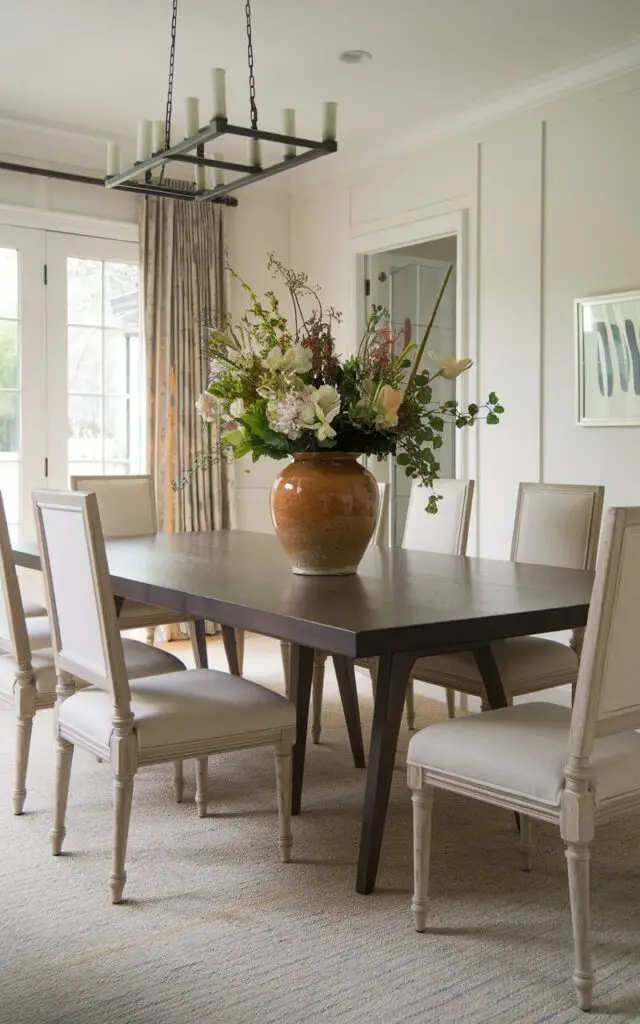
Keep your dining table decor minimal for a transitional feel.
A simple vase with fresh flowers or a sleek candle arrangement is all you need to make the table look elegant yet uncluttered.
This approach allows the beauty of the furniture to shine while adding just the right amount of decorative touch.
16. Incorporate Metallic Accents
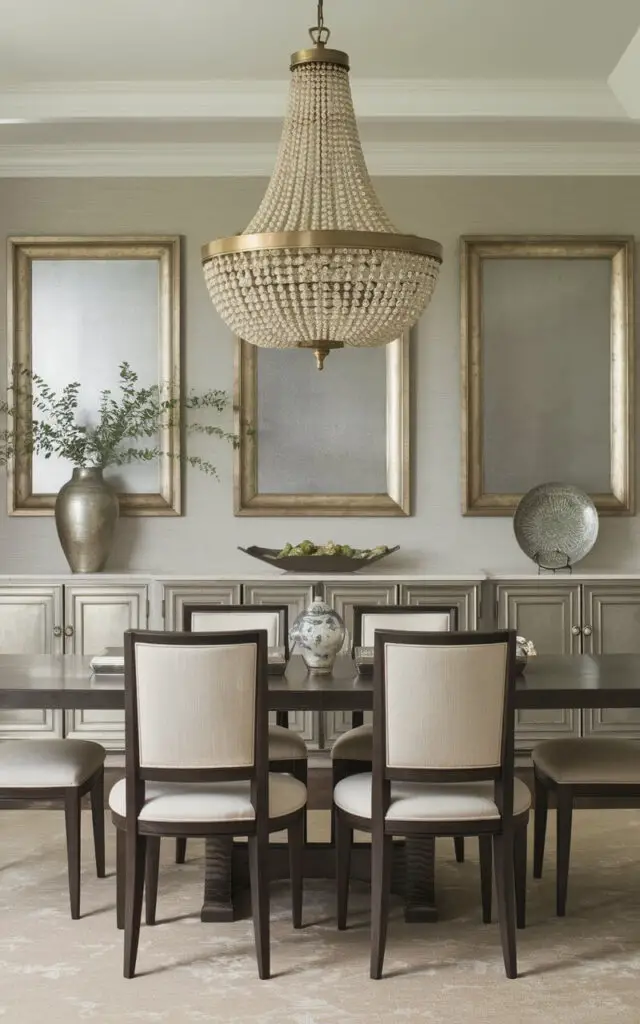
Metallic accents, like brass or brushed nickel, can bring a modern edge to your transitional dining room.
Consider using metallic light fixtures, picture frames, or hardware on cabinets to subtly enhance the space.
The key is to keep these accents refined and not overly shiny for a sophisticated look.
17. Mix Old and New Accessories
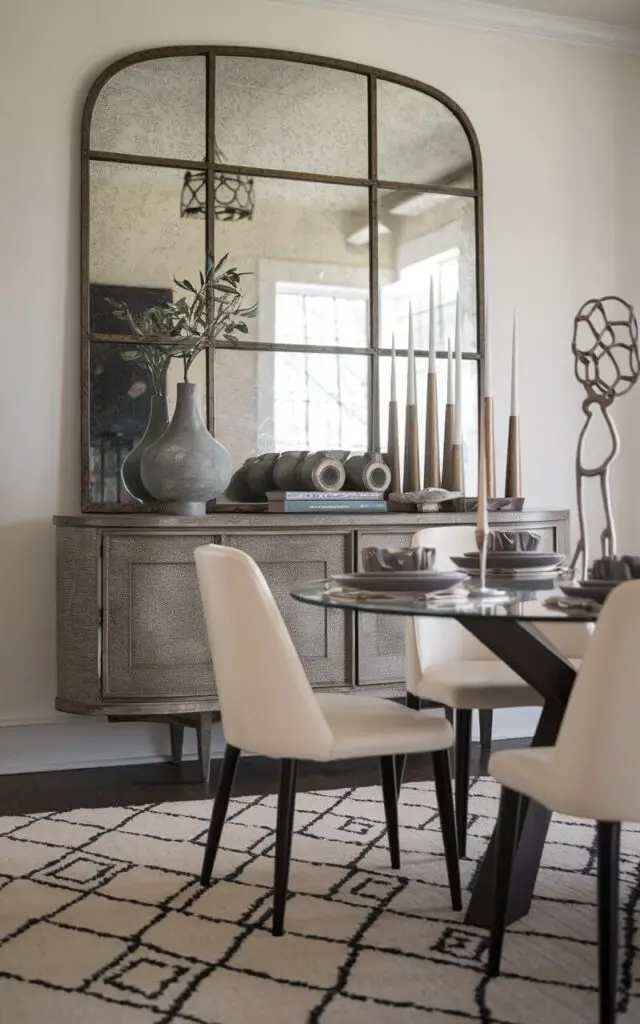
In a transitional dining room, you can mix vintage pieces like a classic china set or antique mirror with contemporary accessories.
This blend of old and new creates visual interest while maintaining balance.
Choose items that speak to each other in terms of color or material for a seamless look.
18. Add a Large Mirror
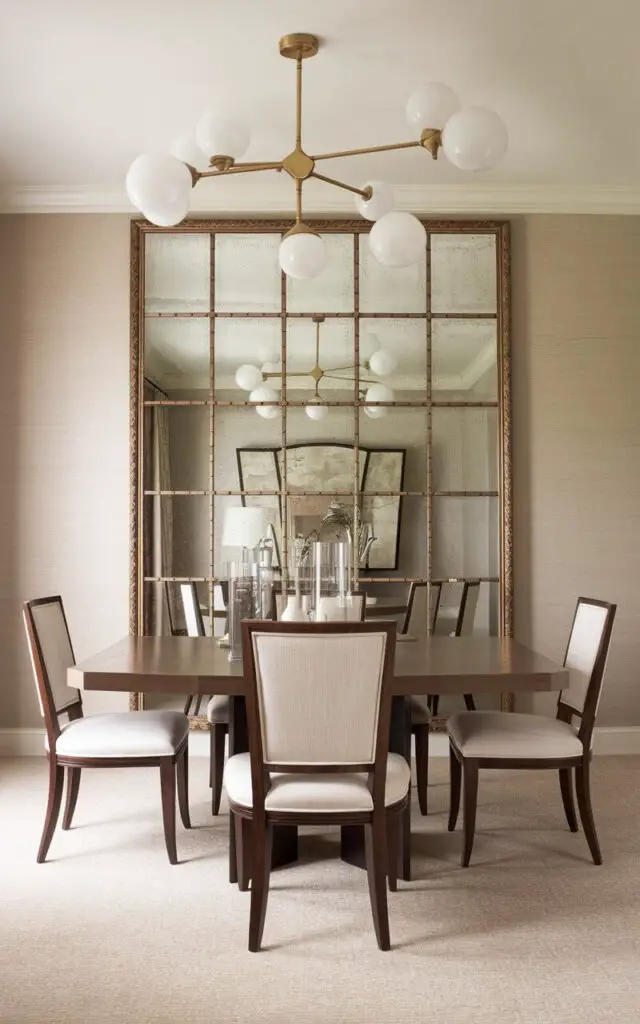
Mirrors can help make your dining room feel larger and brighter.
A large framed mirror, especially in a metallic or wooden finish, is both functional and stylish.
Place it opposite a window or light source to reflect light and create the illusion of more space, contributing to the room’s overall ambiance.
19. Choose a Bench for Seating
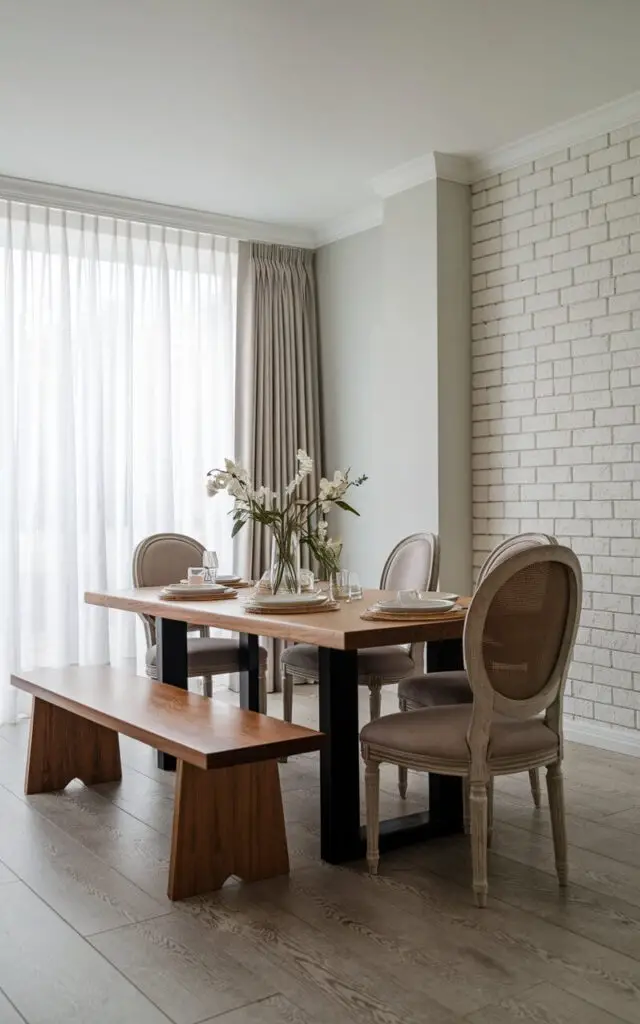
For a more relaxed, modern approach, consider using a bench on one side of the dining table.
A bench introduces an informal seating option while maintaining the clean lines typical of transitional design.
Pair it with traditional dining chairs on the other side to balance the look.
20. Incorporate Greenery
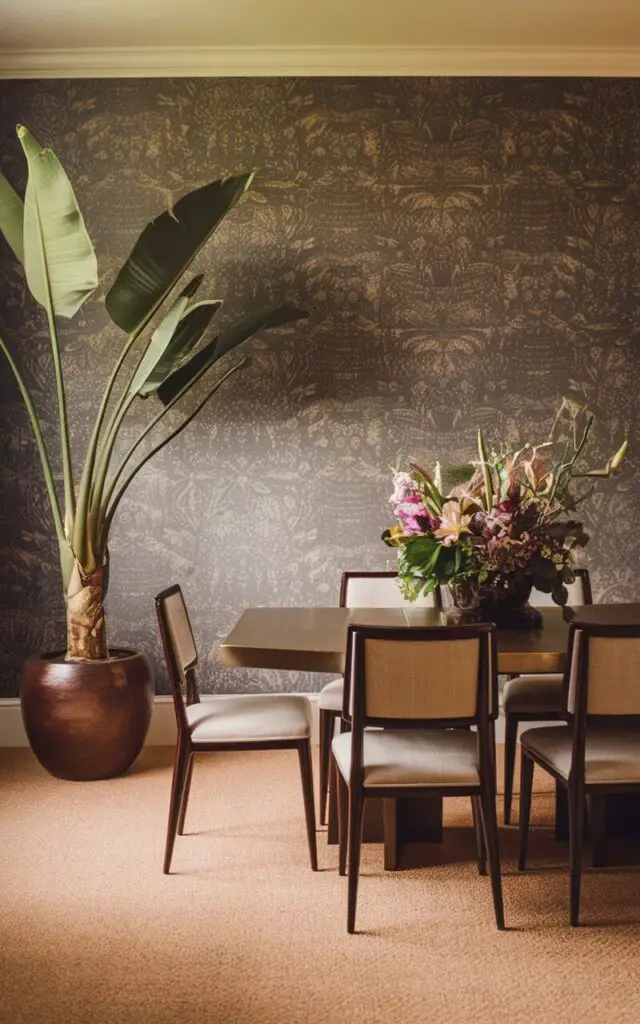
Add some life to your dining room by incorporating houseplants or fresh flowers.
Greenery brings a natural element that pairs well with both the traditional and modern aspects of a transitional room.
Opt for simple, elegant plants like fiddle leaf figs or a centerpiece of fresh blooms to enhance the space.

21. Embrace Symmetry
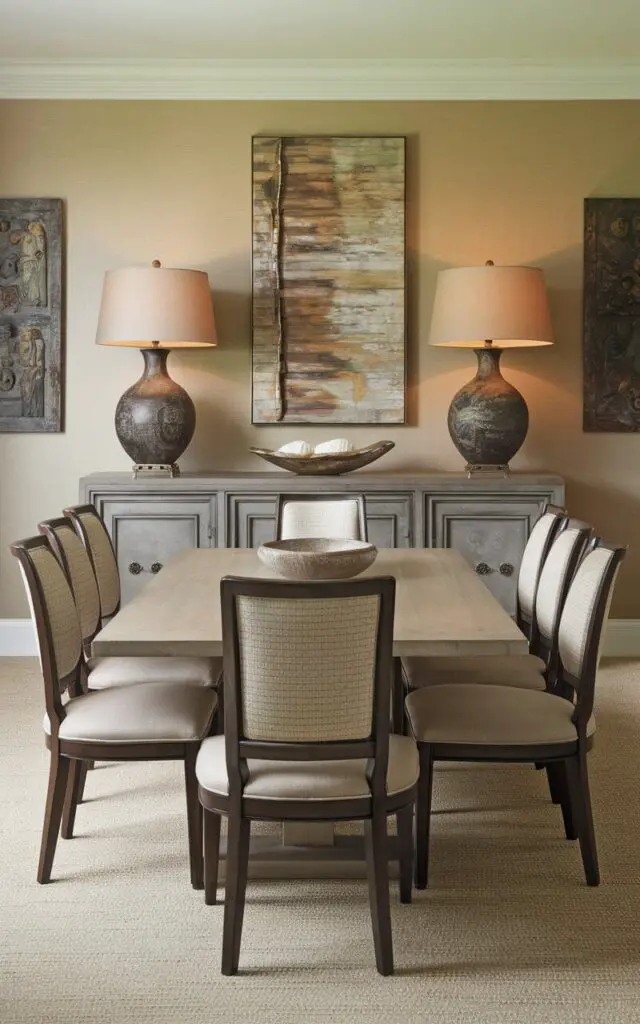
Symmetry is a defining feature of transitional design.
Whether it’s through the arrangement of furniture, lighting, or decor, maintaining balance is essential.
For example, you could position identical chairs on either side of the table or flank a sideboard with matching lamps for a harmonious look.
22. Consider a Round Table
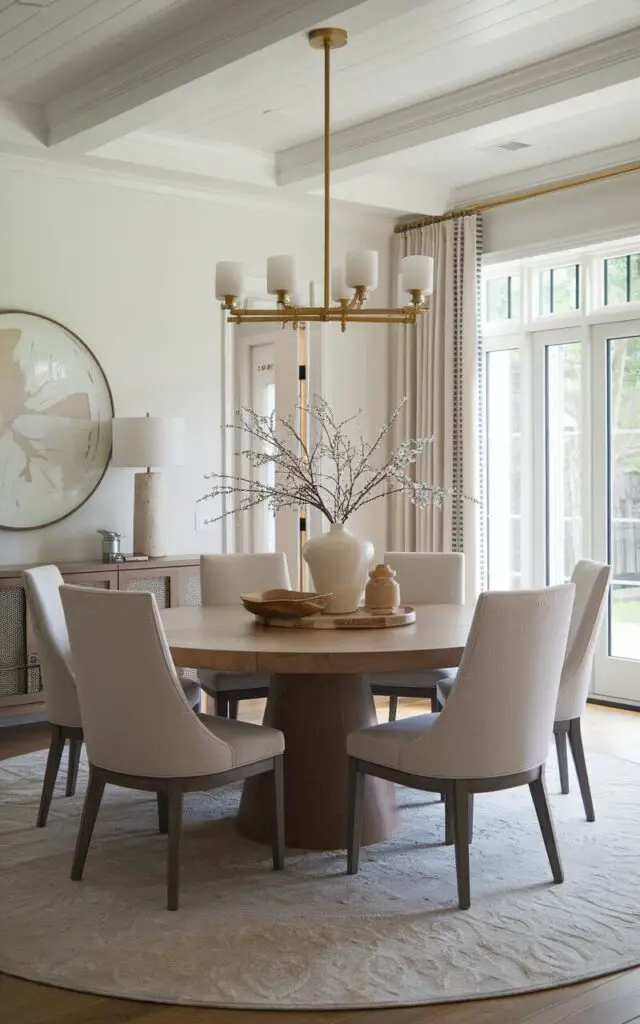
Round dining tables are a great option for transitional dining rooms, as they promote conversation and create a cozy atmosphere.
They also help break up the sharp lines of other furniture pieces, adding a soft touch.
Choose a simple wooden or glass-topped round table to keep the look elegant and understated.
23. Add Personal Touches
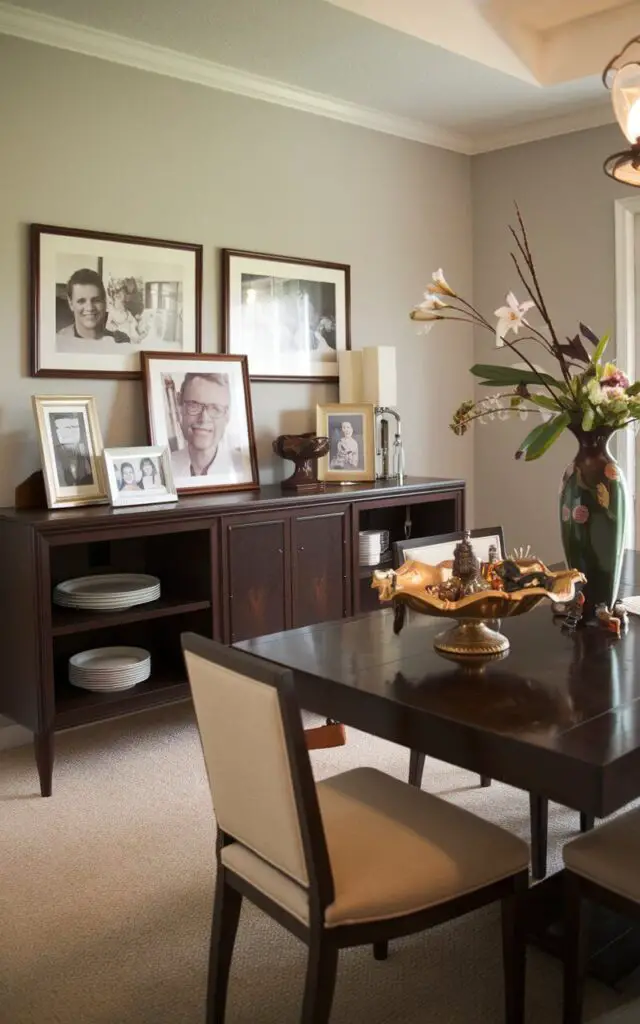
While transitional design is known for its balance and neutrality, personal touches make a dining room feel welcoming.
Consider adding family heirlooms, framed photographs, or travel souvenirs as decorative accents.
These items add character and ensure your dining room reflects your unique style without disrupting the overall aesthetic.


